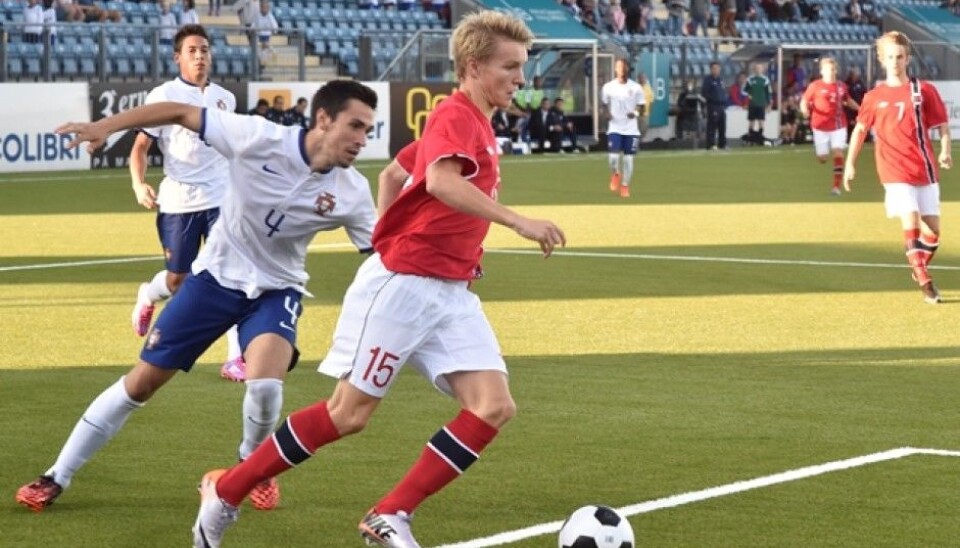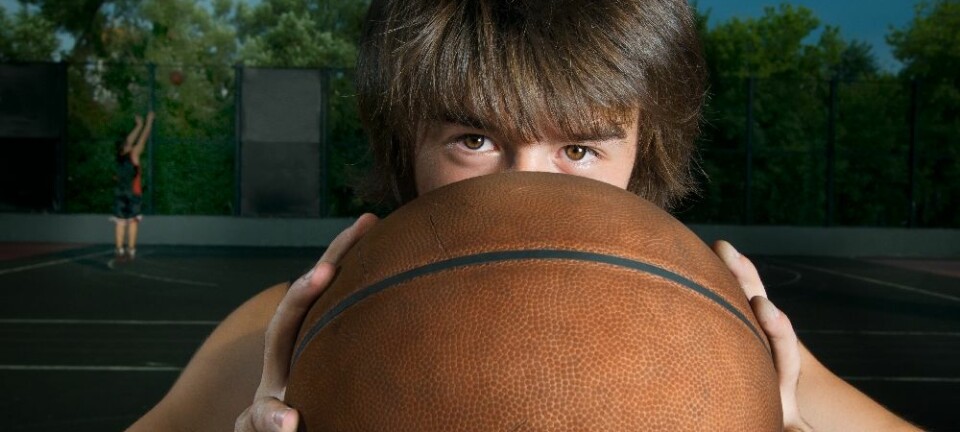
How do kids who excel in sports become real stars?
Certain children demonstrate a remarkable talent in sports at an early age. Why do some of them fade away, while others rise to the big leagues and earn millions doing so? Being born early in the year is a clear advantage, according to a Norwegian researcher.
Denne artikkelen er over ti år gammel og kan inneholde utdatert informasjon.
What does it take to turn talented kids into top-notch sports competitors? Some promising young stars fizzle out early. Are they wasting their talent, or are trainers overlooking potential prodigies?
Senior Lecturer Stig Arve Sæther at the Norwegian University of Science and Technology (NTNU) in Trondheim has answers to these questions. He studies talent development in sports for children and adolescents and runs a project called Football and Talent, where he has followed a cohort of age-specific national soccer team players in Norway since 2005, from when they were 13 years old.
What is talent?
Parents might think their child has great talent, but they tend to be fairly biased. Is there and objective definition of talent?
“Most people recognize a sports talent when they see one. A talented child distinguishes herself or himself by having the best physical abilities in their age group. They also have a gift for training ― they have the physical stamina for training and they like it,” Sæther says.
Sæther says that real talents also have certain other mental capabilities. They can handle winning and losing, both during practice sessions and in matches. He compiled these criteria after asking 14 coaches in Norway’s top soccer league about how they define talent.
Many children and their hopeful parents wonder how these talents are cultivated to become stars. Sæther has researched this.
Many of the right conditions need to be in place when a child prodigy succeeds in the transition from a promising neophyte to becoming a top performer in his or her teens. These include the traits of the child, the coach and parents, as well as training conditions and the right social environment. Of course luck and incidental issues can also be involved. An odd one of these is the year in which a child is born.
Physical conditions around a player mean less than many might think. Coaches and parents mean a lot, but research shows that the key is inside the young athlete.
Three factors seen time and again
These three factors characterize children and teenagers who can be defined as talents and who have a chance of going far as senior players:
- They practice a lot on their own, in addition to organized training
- They have trained and played games with older players
- They are born early in the year.
10,000 hours
A rule of thumb has evolved in sports about how much training is needed to reach the peak. Some 10,000 hours of practice have to be spent within a ten-year period. For instance, Norway’s cross-country skier Bjørn Dæhlie spent that much time training to become a consistent gold-medal winner.
“This amounts to a thousand hours of training a year, or 19 hours per week. That’s nearly three hours per day, including Saturday and Sundays, if we think in a ten-year perspective,” says Sæther.
This represents the total time spent training, including the physical workouts and practice organised with a team, matches and training on one’s own. A youngster’s own training should be fun. It should essentially be unorganized play in which children are out there honing their skills alone or along with other kids. A typical example would be impromptu soccer games on a nearby vacant lot or pitch with neighbour kids.
This play does not have to directly relate to the sport the child will excel in. The main thing is for the child to gain lots of experience moving around, coordinating muscles and gaining balance.
It’s recommended that organized training only comprise a small share of the total in younger age groups. Sæther points out that the player’s self-motivation is essential or they will not train enough.
“It is of no use to train for two extra hours on your own in addition to an hour of organized training if you dislike doing it. If there is no joy, the effect of the training will be reduced.”
So there is little reason for parents to press their children to practice if they don’t really want to on their own.
“It is recommended that 80 percent of the training be a form of play, and 20 percent be organized,” Sæther said.
Strong inner motivation
So a key characteristic of kids who become professionals is that they have trained a lot on their own, perfecting skills from an early age.
“They get a lot of fun out of the sport. The player’s inner motivation is the key characteristic identified by coaches when defining talent and a requirement for success,” Sæther said.
Patience is also important. A budding sports star cannot give up when things are going poorly.
“This might include being injured, or that perhaps they haven’t been selected to play for the team ― or they make no progress in their skills. Many may be tempted to give up when they realize that the sport has its ups and downs,” Sæther said.
“We see some kids have more of these mental skills of perseverance than others,” he added. “But we also see that feedback is important, either from the coach or the parents. Those who succeed say that it is important to be seen, that someone has noticed their progress.”
But what about the season when kids are born? Being born early in the year increases the probability of being picked out at a young age as a talent who is followed more. Several research studies have shown this.
“Fifty percent of those who are defined as talents are born from January to March. And 70 to 80 percent are born in the first half of the year,” says Sæther. This is called the relative age effect.
These children have a natural advantage over the kids in their own age group and school class who were born later in the year.
“Spring children are a little bigger, a little faster and can have better motor skills than autumn children, as they have lived a little longer. If you compare a January kid with one born in December the same year, they have nearly a year’s head start," Sæther said.
------------
Read the Norwegian version of this article at forskning.no
Translated by: Glenn Ostling

































